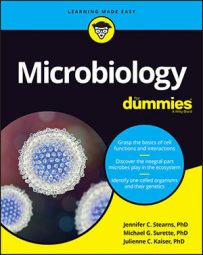Vaccines have been essential in eradicating or preventing life-altering diseases, but lately, they've come under fire. Here are some common myths about vaccines:
Myth 1: Vaccines aren't actually necessary. The truth is that vaccines have been essential to reducing rates of childhood illnesses. Before vaccines, 25 percent of children died before the age of 5 from pneumonia, diarrhea, measles, pertussis, or rubella, among other diseases. Millions of people suffered paralysis, deafness, and brain damage from these diseases. Although standards of sanitation and nutrition have improved the lives of children, vaccines were responsible for a dramatic decrease in childhood infectious diseases after vaccines became widespread in the 1960s.
Before vaccinations, the risks of measles, whooping cough, and polio were very high, and the benefits of vaccines far outweighed the risks. Now that the threat of these diseases has disappeared (because of vaccines), the risks of the vaccines seem high to some people.
Myth 2: Vaccines are dangerous. The truth is that vaccines are very safe for almost everyone. In fact, they have fewer side effects than any drug. There are risks associated with vaccination, including redness around the injection site and a mild fever. In very rare cases, a child can have an allergic reaction to a vaccine, which is why they should be monitored for an immediate reaction or a rash for a few days after being vaccinated. This kind of reaction doesn't give children allergies or make them sick in any other way, but it's a sign that they have a sensitivity to something in the vaccine itself and should be given a specially formulated vaccine or avoid that type of vaccine in the future. Of the ingredients in vaccines, only the egg proteins or gelatin are present in a high enough concentration to cause a reaction.
All claims that vaccines are linked with autism or intestinal inflammation have been thoroughly debunked.
The levels of thimerosol and aluminum found in vaccines have not been shown to cause adverse effects in humans or animals, but thimerosol was removed from most vaccines in 2001 as a precautionary measure because it does contain mercury.
Myth 3: Natural immunity is better. The immunity you get from contracting the disease and surviving does last longer that the immunity you get from being vaccinated, except that with vaccination there is no risk of suffering the symptoms of the disease. Also, when a high enough percentage of the population is vaccinated, the pathogen (microorganism causing disease) can be removed from circulation, ending the need for further vaccination, as in the case of small pox. We were on the verge of eradicating measles in 2011, but the percentage of people being vaccinated dropped too low and it came back.
Myth 4: Herd immunity protects the unvaccinated. Herd immunity is when enough of the population is immune that others who are not immune are still protected because the pathogen can't pass between people. Herd immunity protects people who are not immune, which is why it's so important for the majority of people to be immune to a pathogen so that those in society who can't get vaccinated, like the elderly and the sick, come into contact with the pathogen less often. As more people choose not to get vaccinated, pockets of susceptible hosts for the pathogen open up, giving the virus or bacteria a chance to move through a population.
Myth 5: The recommended vaccination schedule is too hard on a child's immune system. This argument is largely based on the levels of aluminum contained in vaccines and suggests that if all vaccines are given at the suggested times, a child may be given as much as 1,225 ìg of aluminum in one visit (for instance, at six months of age). This may seem like a lot, but when compared to the 6,700 ìg of aluminum in breast milk, the 37,800 ìg of aluminum in infant formula, or the 116,600 ìg of aluminum in soy-based formula a child at this age will have consumed, it really isn't.
Aluminum, mercury, and many other elements are part of the earth's composition. Despite being toxic at high levels, they're present in food and water at low levels. Every person on earth has a low concentration of these elements in his or her body.

